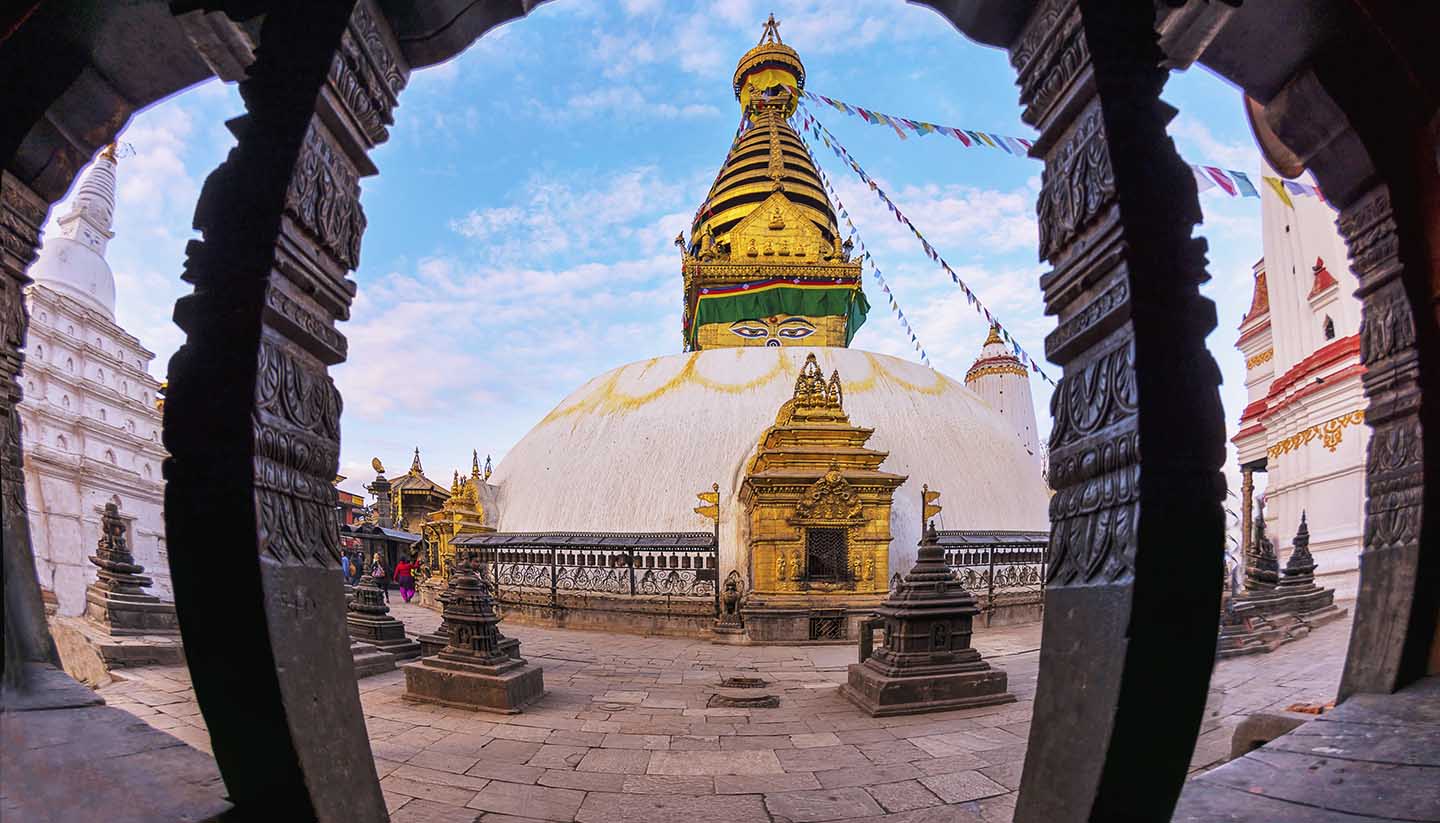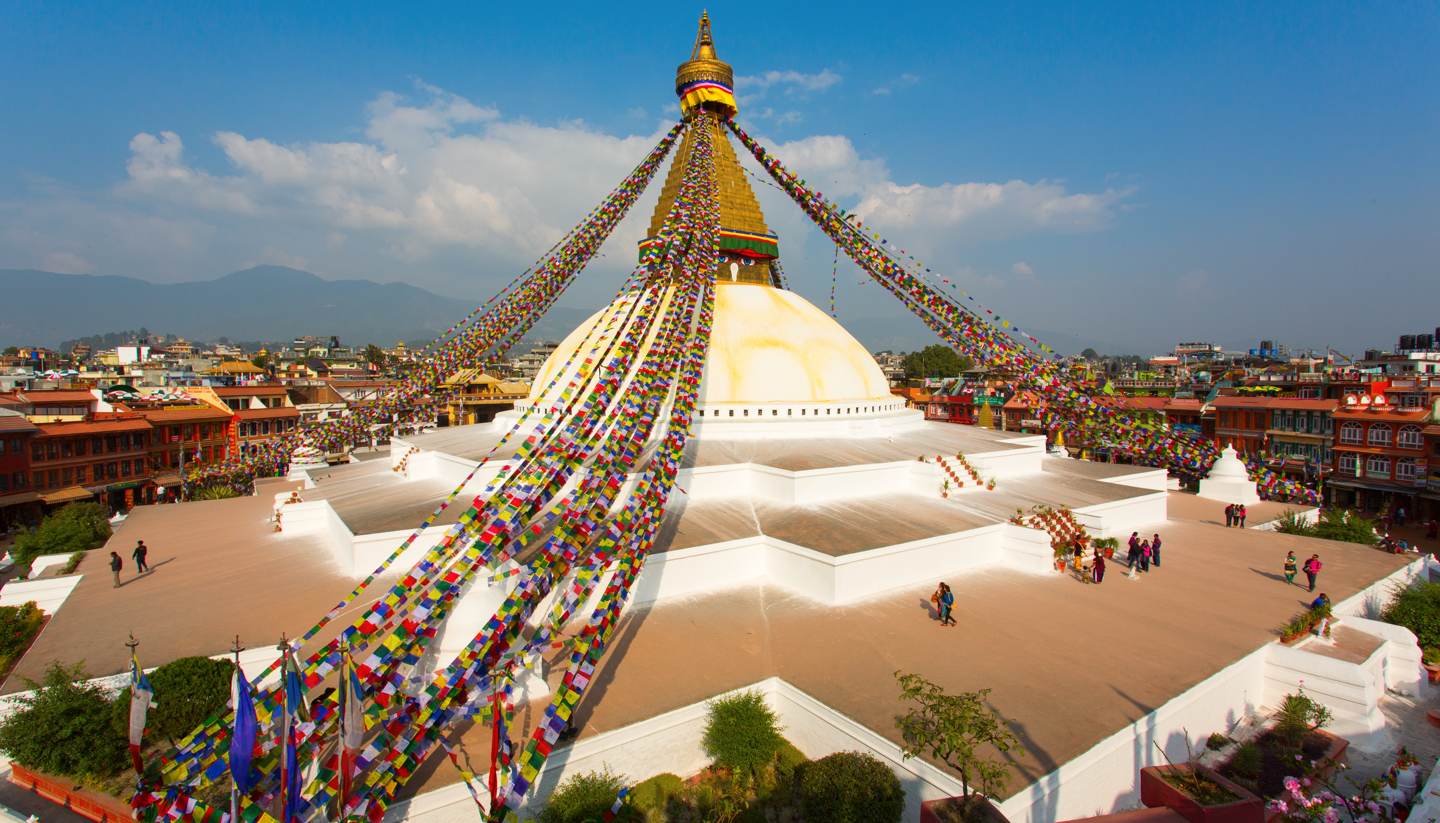Kathmandu History
According to legend, the Kathmandu valley was created by the Buddhist saint Manjushree, who used his sword to burst the valley wall, draining the huge lake that filled the valley in prehistoric times.
Archaeologists have since discovered that the lake drained away naturally around 10,000 years ago, but the first signs of a permanent city appeared in the second century BC.
Religion played a pivotal role in Kathmandu’s rapid development – the stupa at Swayambhunath became a major pilgrimage site for Buddhists, while the sacred Bagmati river attracted Hindu pilgrims.
The first of many golden eras came in the fourth century AD, with the rise of the Licchavi kingdom, whose rulers kickstarted trade across the Himalaya.
Subsequent centuries saw a succession of dynasties rise and fall, before the Malla kings gained control of the valley in the 11th century. Kathmandu’s rulers filled their capital with temples, palaces and stupas, competing with the rival city-states of Patan and Bhaktapur.
With Kathmandu as the capital, the three kingdoms were united in 1768 by Prithvi Narayan Shah, whose descendants ruled as kings until the abolition of the monarchy in 2008.
Following the murder of King Birendra and nine other members of the Royal Family by Crown Prince Dipendra in 2001, the new king, Gyanendra, assumed direct control, leading to massive civil unrest.
Democracy was restored in 2006 and the Maoists declared a unilateral ceasefire. Maoist parties gained a massive majority in the 2008 elections, leading to the formal abolition of the monarchy that year.
The Communist-dominated government has maintained a fragile peace, but has done little to address the Kathmandu Valley’s most pressing concerns – corruption, poverty and chronic shortages of water and electricity.
Did you know?
• Seven groups of historical monuments, buildings and public spaces make up the Kathmandu Valley UNESCO World Heritage site.
• Kathmandu took its name from the 16th-century Kasthamandap temple, which is said to have been created from the wood of a single tree.
• Freak Street was a hippy hub during the 1960s and 1970s, largely thanks to its licensed cannabis shops.



